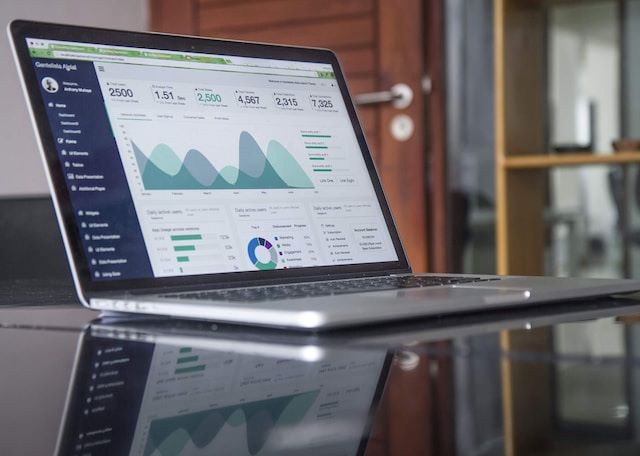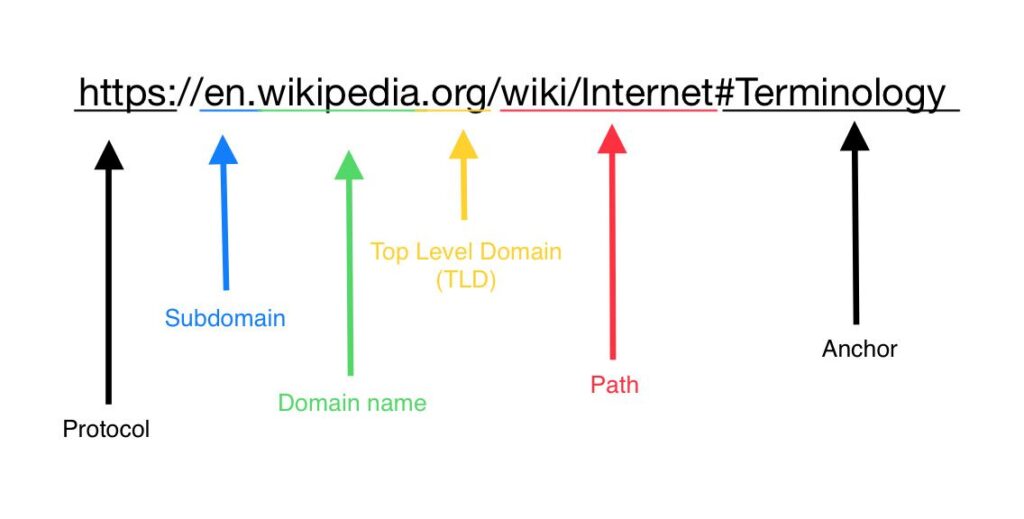Introduction:
When it comes to establishing a robust online presence, On-Page SEO can be your best friend. It enables website owners and digital marketers to make crucial decisions, ultimately helping them secure the top spot in search engine results.
On-page SEO, in its essence, is the art and science of fine-tuning your online content to make it more appealing to search engines like Google. This practice ensures that your website ranks higher in search results, thus increasing its chances of being discovered by your target audience.

Now, within the expansive world of Search engine Optimization, On-Page SEO technique revolves around optimizing individual web pages on your site to boost their rankings on search engine result pages.
Let’s delve deeper into what SEO entails and why On-Page SEO is so much of importance, for achieving favourable search engine rankings and much more.
Table of Contents
Definition:
On-Page SEO, also known as on-site SEO, refers to the practice of optimizing individual web pages on a website to improve their search engine rankings and earn organic traffic. It involves optimizing various elements on a web page, such as content, meta tags, HTML source code, and site structure, to make them more attractive to search engines like Google.

A famous digital marketer, Rand Fishkin, co-founder of Moz, has a succinct definition of On-Page SEO:
“On-page SEO is the practice of optimizing individual web pages to rank higher and earn more relevant traffic in search engines. On-page refers to both the content and HTML source code of a page that can be optimized, as opposed to off-page SEO, which refers to links and other external signals.”
The Power of On-Page SEO:
Think of it as the fine-tuning of your website’s internal machinery. On-Page SEO involves optimizing specific elements within each web page, making them more attractive to search engines and users alike. This fine-tuning directly contributes to your website’s ranking on search engines.
When your web pages are On-Page SEO-optimized, they become like well-lit signposts on the vast digital highway. Google’s algorithms take note of these signals and reward your pages with higher positions in search results (SERPs). In essence, On-Page SEO is the key that unlocks the door to improved Google rankings, increased visibility, and greater chances of connecting with your intended audience.
In this article, we will embark on a journey through the intricacies of On-Page SEO. We’ll uncover the techniques and best practices that can use to propel web pages to the top of search engine result pages. Whether you’re a seasoned digital marketer or just a beginner, trying to explore the world of SEO.
On-Page SEO is essential for achieving the online visibility and success your website deserves.
Suppose you’re in need of a new smartphone. You turn to your trusted search engine and type in “best smartphones under $500.” Within seconds, the search engine returns a list of websites with product recommendations, reviews, and prices.
Now, think about how often you venture beyond the first page of results. Rarely, right? This is where On-Page SEO comes in to help you out..
Importance of On-Page SEO:
The importance of On-Page SEO cannot be overstated. It serves as the bridge connecting your website to the vast online audience actively searching for products, information, or services. When your web pages are effectively optimized, they become more visible to search engines like Google, Bing, and Yahoo.
Google, being the most widely used search engine, continuously sends out bots to crawl and index web pages. These bots assess various aspects of your website, including content quality, meta tags, URL structure, and user experience.
Based on their findings, Google determines how relevant and valuable your web pages are to user’s search queries.
This evaluation ultimately influences where your pages appear in Search Engine Results Pages (SERPs). SERPs are the lists of web pages displayed when a user enters a query into a search engine. Appearing at the top of these results can significantly boost your website’s organic traffic, making On-Page SEO a vital component of any successful online presence.
In this article, we will delve deeper into the world of On-Page SEO, exploring its various facets and techniques. We’ll uncover how optimizing elements such as keywords, meta tags, content, and user experience can have a direct impact on your website’s visibility, Google indexing, and ultimately, your success in the competitive online realm.
So, let’s embark on this journey to unlock the power of On-Page SEO and understand why it’s more critical today than ever before.
Let’s cover the factors that are needed for the best On-Page optimization.
1. Keyword Research: Unlocking the Language of Search Engines
Keyword research serves as the foundational cornerstone of On-Page SEO, wielding immense power in determining a website’s search engine success. Here’s why it’s a crucial starting point:

Explaining the Significance:
In the vast ocean of the internet, even Google would find it hard to search for information. It is the words or phrases in content that help search engines like Google achieve desired results. These words are nothing but keywords or phrases that the audience asks Google, and after a search, Google presents them with answers to the queries in the form asked by the audience. If Google is the body, the keywords are like blood, without which even Google won’t be able to do much.
This is where keyword research comes into play. It’s the process of understanding what specific terms and phrases your target audience is typing when they seek information, products, or services related to your niche.
By identifying and incorporating these keywords strategically into your website’s content, you’re essentially speaking the same language as the search engine. This alignment makes it more likely for your pages to be shown in search results when users seek information related to your field.
Without keyword research, your website would be akin to a library without a catalog – valuable content hidden in the digital stacks, largely undiscovered by anyone.
Choosing Relevant and Effective Keywords:
Choosing the right keywords requires a blend of intuition and data-driven analysis. It’s about striking a balance between what your audience is searching for and what your website can realistically compete for in search rankings.
Keyword research tools such as Google’s Keyword Planner, SEMrush, or Ahrefs can be invaluable allies in this quest. These tools provide insights into keyword search volume, competitiveness, and related terms, helping you make informed choices.
Keyword Tools and Strategies:
In the world of On-Page SEO, keyword tools serve as indispensable guides, helping you find the keywords that drive organic traffic. These tools not only uncover keywords but also track their performance and spot emerging trends.
Long-tail keywords, though individually less voluminous, can collectively deliver substantial, highly targeted traffic by aligning content with user intent, whether for information, products, or solutions.
Keyword research in On-Page SEO is an art that involves speaking the audience’s language, strategically selecting phrases, and continually adapting to changing search dynamics.
Mastering this art empowers your website to stand out in the digital space and connect effectively with those seeking your response on their queries.
2. High-Quality Content:

1. Emphasizing the Importance of Valuable and Relevant Content:
At the heart of On-Page SEO lies the creation of valuable and relevant content. This is not just a buzzword; it’s the lifeline that connects your website with your target audience. Valuable content addresses the needs, questions, and interests of your readers.
Relevance ensures that your content aligns with the core theme of your website and resonates with your target audience.
Google rewards websites that consistently produce high-quality, relevant content by ranking them higher in search results.
2. Google’s Search Quality Guidelines and E-A-T:

Google’s search quality guidelines, particularly the concept of E-A-T (Expertise, Authoritativeness, and Trustworthiness), are crucial in the context of content creation.
Google values content from sources that demonstrate expertise in their field, exhibit authority on the subject matter, and establish trustworthiness with their audience.
By adhering to E-A-T principles, you not only enhance your website’s credibility but also improve its chances of ranking higher. It’s a signal to both users and search engines that your content can be very much relied upon.
3. Engaging Headlines, Subheadings, and Formatting:
Engaging headlines, subheadings, and formatting are essential tools for capturing and maintaining your audience’s attention.
Subheadings break down content into digestible sections, making it easier for users to skim and find what they’re looking for.
Proper formatting, including bullet points, numbered lists, and bold text, enhances readability and user experience. It’s not just about what you say but also how you present it that matters.
4. Understanding User Intent:
User intent is the compass that guides content creation. Before writing, it’s crucial to understand what users are seeking when they enter a specific query. Are they looking for information, product reviews, solutions to problems, or entertainment?
Tailoring your content to match user intent ensures that you not only attract visitors but also satisfy their needs. This alignment not only improves user engagement but also signals to search engines that your content is relevant and valuable.
3. Meta Tags and Descriptions:

1. Purpose of Title Tags, Meta Descriptions, and Header Tags:
Title tags, meta descriptions, and header tags (H1, H2, H3, etc.) are fundamental elements in structuring and presenting web content for both search engines and users.
Title Tags: These HTML tags provide a concise and descriptive title for a web page. They serve as the first point of contact with search engine and users. Title tags convey the subject matter and relevance of the page.
Meta Descriptions: Meta descriptions are brief summaries that provide additional context about the page’s content. While not a direct ranking factor, they can significantly impact click-through rates by enticing users to click on the search result.
Header Tags: Header tags, organized hierarchically (H1 for main headings, H2 for subsections, H3 for sub-subsections, and so on), help structure the content and make it more readable. They signal the hierarchy of information on a page.
2. Guidelines for Optimizing These Elements for On-Page SEO:
To optimize title tags, meta descriptions, and header tags for SEO:
Title Tags: Keep them concise (around 60 characters), include relevant keywords toward the front, and make them unique for each page.
Meta Descriptions: Craft compelling descriptions (around 150-160 characters) that summarize the content, incorporate keywords naturally, and encourage click-trough’s.
Header Tags: Use header tags to organize content logically, starting with H1 for the main title, followed by hierarchical usage for subheadings. Ensure they reflect the content’s structure accurately.
3. Impact of Compelling Meta Tags on Click-Through Rates:
Compelling title tags and meta descriptions can significantly impact click-through rates (CTR). When these elements are well-crafted and enticing, they capture the attention of search users, increasing the likelihood that they will click on your search result.
High CTR not only boosts organic traffic but can also positively influence search rankings, as search engines consider user engagement as a ranking factor.
4. Table of Contents:

A table of contents is a navigational aid that outlines the structure of longer articles or documents. It serves as a roadmap for readers, enabling them to jump to specific sections of interest.
From an SEO perspective, a table of contents can enhance user experience by improving the organization and readability of content. It may also increase the likelihood of featured snippets in search results when structured correctly.
Incorporating these elements effectively into your web content not only improves on-page SEO but also enhances the overall user experience.
4. URL Structure:

1. Significance of Clean and SEO-Friendly URLs:
Clean and SEO-friendly URLs are essential components of On-Page SEO as they play a crucial role in user experience and search engine optimization.
A clean URL is one that is easy to read and understand for both users and search engines. It provides a clear indication of the page’s content and structure, making it user-friendly.
On the other hand, an SEO-friendly URL is optimized to include relevant keywords, which helps search engines identify the page’s topic and context more effectively.
Having clean and SEO-friendly URLs offers several benefits:
Improved User Experience: Users can quickly grasp what a page is about by looking at the URL. Clean URLs are more likely to be visited and also lead to a better user experience for viewers.
Better Click-Through Rates (CTR): Clear and concise URLs are more likely to attract clicks from search engine results pages (SERPs). When users see a URL that matches their search intent, they are more inclined to click through to the page.
Enhanced Search Engine Visibility: Search engines prefer clean and relevant URLs. They can better understand and index pages with SEO-friendly URLs, which can lead to improved rankings.
2. Best Practices for Structuring URLs:
To create clean and SEO-friendly URLs, follow these best practices:
Keep Them Short: Shorter URLs are easier to read and share. Aim for concise URLs that convey the page’s content without unnecessary characters or parameters.
Use Hyphens: Separate words in URLs with hyphens (-) rather than underscores or spaces. This improves readability and helps search engines parse the words correctly.
Avoid Special Characters: Limit the use of special characters, symbols, or non-alphanumeric characters in URLs, as they can lead to confusion.
Include Keywords: Incorporate relevant keywords that reflect the content of the page. Use hyphens to separate multiple words in the keyword phrase.
Including keywords in URLs is a valuable SEO strategy. When relevant keywords appear in the URL, it provides a strong signal to search engines about the content’s topic and relevance.
Maintain Consistency: Keep URLs consistent in structure and format throughout your website. Consistency aids both user navigation and search engine crawling.
In summary, clean and SEO-friendly URLs are crucial for improving user experience, click-through rates, and search engine visibility.
5. Linking: Internal, outbound and inbound links.

1. Enhancing User Experience and SEO with Links:
Links are the backbone of web navigation, connecting various web pages and providing pathways for users and search engines to explore your website’s content.
These links can be categorized into three main types: internal, outbound, and inbound.
Internal Links: Internal links connect pages within your website, this allows visitors to easily navigate between related content. They also assist search engines in discovering and indexing your site’s pages, contributing to improve SEO of your websites.
Outbound Links: Outbound links lead users from your website to external sources. While they can drive traffic to other reputable sites, it’s essential to use them judiciously and link to high-quality, relevant sources. Google appreciates outbound links to authoritative sites as they demonstrate your content’s credibility.
Inbound Links: Inbound links, also known as backlinks, are links from external websites pointing to your site. These are highly valuable for SEO. Google views inbound links as votes of confidence in your content’s quality and relevance.
Earning high-quality backlinks from reputable websites can significantly boost your site’s authority and search engine rankings.
2. Strategic Placement of Internal Links within Content:
To harness the benefits of these links effectively:
Relevance: When placing internal links, ensure they are contextually relevant to the content. This enhances the user’s journey by providing additional information or re-directing viewers to related topics of interest.
Hierarchy: Consider the hierarchical structure of your content and website. Prioritize internal links to important pages, such as your homepage or cornerstone content, to distribute link equity strategically.
User Flow: Think about the user’s reading flow and insert internal links where they are likely to find them naturally. Typically, this includes within the content, at the end of articles, or in relevant lists or menus.
3. The Importance of Anchor Text:
Anchor text, the clickable text of a link, plays a crucial role in signaling the linked page’s content and relevance:
Keyword Relevance: Anchor text should incorporate relevant keywords related to the linked page’s content. This provides context to both users and search engines, aiding in SEO.
Descriptiveness: Anchor text should concisely describe the linked content to help users understand what they can expect when they click the link.
Google’s Perspective: Google uses anchor text to understand the topic of the linked page and determine its relevance to search queries. Well-optimized anchor text helps Google better index and rank your pages.
In summary, links, including internal, outbound, and inbound links, are integral to user experience and SEO. They facilitate navigation, content discovery, and credibility.
6. Image Optimization:
Image optimization is vital because it enhances page loading speed, improves user experience, and boosts SEO. Images often make up a significant portion of a web page’s content, and optimizing them ensures faster load times and better search engine rankings.
Using Descriptive File Names and Alt Tags: For SEO, images should have descriptive file names that reflect their content. Alt tags provide alternative text for images, making them accessible to visually impaired users and serving as valuable SEO elements.
Using relevant keywords in alt tags can improve search engine visibility.
Image Size and Format Considerations: Large image files can slow down page loading, so it’s essential to compress images without compromising quality. Choosing the right image format (JPEG, PNG, etc.) based on the type of image and its purpose is also crucial for efficient loading.
7. Page Loading Speed:
Impact on User Experience and SEO: Page loading speed profoundly influences user experience. Slow-loading pages frustrate users and can result in higher bounce rates. From an SEO perspective, Google considers page speed as a ranking factor, meaning faster-loading pages tend to rank higher in search results.
Techniques for Improving Page Speed: Techniques like image compression, browser caching, and minimizing code (CSS, JavaScript) can significantly improve page loading speed. Content delivery networks (CDNs) can distribute content across multiple servers, reducing latency.
Tools for Testing and Measuring Page Speed: Tools like Google PageSpeed Insights and GTmetrix help analyze and optimize page loading speed. They provide actionable insights and recommendations for improvements for better On-Page SEO.
8. Mobile-Friendliness:

Importance of Responsive Web Design: With the increasing use of mobile devices, responsive web design is critical. It ensures that websites adapt seamlessly to various screen sizes, improving user experience on mobile devices.
Google’s Mobile-First Indexing: Google primarily uses the mobile version of a website for ranking and indexing. Websites that aren’t mobile-friendly may experience lower rankings in search results.
Optimizing for Mobile Users: To optimize for mobile users, focus on responsive design, fast-loading pages, and mobile-specific SEO practices. Ensure that content remains easily accessible and readable on smaller screens.
9. User Experience (UX) and Responsive Design:
Role of UX in On-Page SEO: User experience directly impacts SEO. A positive UX, characterized by easy navigation, clear site structure, and valuable content, leads to lower bounce rates and increased dwell time, both of which signal quality to search engines.
Clear Site Structure and Navigation: An intuitive site structure and navigation menu make it easier for users to find content. A well-structured website also aids search engine crawlers in understanding your content.
Impact of Bounce Rates and Dwell Time on SEO: High bounce rates (users quickly leaving a page) and low dwell times (short time spent on a page) can negatively affect SEO. Quality content and a user-friendly interface can reduce these metrics.
10. Content Updates and Maintenance:
Need for Regular Updates: Regularly updating and maintaining website content is essential to keep it accurate, fresh, and relevant. It demonstrates your commitment to providing valuable information to users.
Benefits of Fresh Content for SEO: Search engines favor websites that regularly publish fresh content. Updating content can improve rankings, increase organic traffic, and engage users.
Content Maintenance Checklist: A content maintenance checklist may include reviewing and updating outdated information, fixing broken links, optimizing images, and ensuring that content aligns with current SEO best practices.
11. Schema Markup:
Introduction to Schema Markup: Schema markup is a form of structured data that provides additional context to search engines. It helps search engines understand content better, which can lead to rich search results, like featured snippets.
Enhancing Search Results: Schema markup can enhance search results by adding information like ratings, reviews, event details, and more directly in the search snippet. This attracts users’ attention and can increase click-through rates.
Conclusion:
On-Page SEO emerges as a fundamental pillar for success and art of fine-tuning your web content to resonate with both users and search engines. From meticulous keyword research to crafting compelling content, optimizing URLs, images, and mobile-friendliness, every aspect of On-Page SEO contributes to the bigger picture.
It’s about understanding the user’s intent, providing them with valuable and relevant information, and delivering a seamless user experience across devices and platforms. It’s the science of speaking the language of search engines and the art of engaging your audience.
By implementing these On-Page SEO strategies, you not only enhance your website’s visibility in search engine rankings but also create an inviting online environment for your visitors. In this dynamic digital age, On-Page SEO isn’t just an option; it’s your website’s best friend, guiding you towards the coveted top spot among search engine results and ensuring your digital presence shines brightly.
So, embrace these practices, stay up-to-date, and let On-Page SEO be your trusted companion on the journey to online success.

I really like it when people come together and share thoughts.
Great blog, continue the good work!
Wonderful, what a website it is! This webpage provides useful facts to us, keep it up.